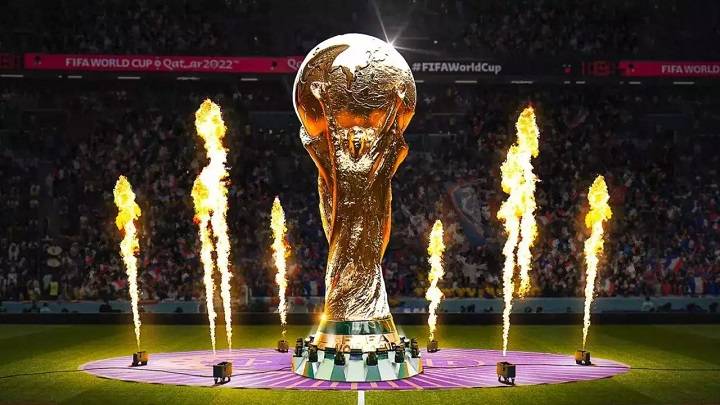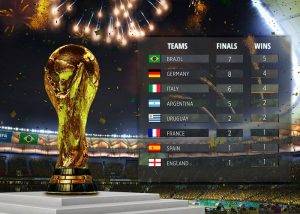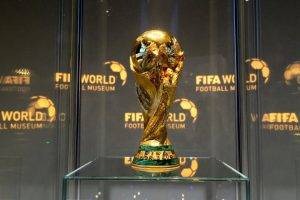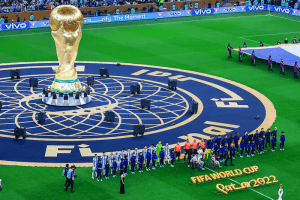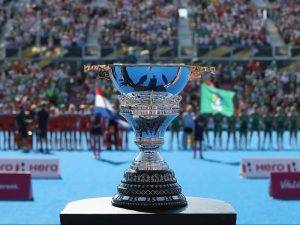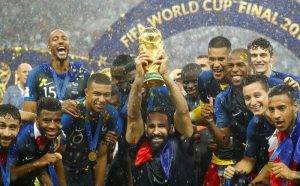Football, the beautiful game, transcends borders and cultures, captivating the hearts of millions around the world. At the pinnacle of international football competition stands the FIFA World Cup—a tournament where nations vie for supremacy and glory. In this extensive exploration, we delve into the archives of football history to unravel the stories of countries that have etched their names in gold, boasting the most FIFA World Cup victories. Join us on a journey through the triumphs, legends, and footballing prowess that define the countries with the most World Cups.
Unveiling the Powerhouses: Countries with Multiple World Cup Victories
Brazil: The Samba Symphony
Golden Legacy:
Brazil, the land of samba and football artistry, holds the record for the most FIFA World Cup victories. With a remarkable five titles (1958, 1962, 1970, 1994, 2002), Brazil’s footballing legacy is synonymous with flair, creativity, and an unmatched passion for the sport.
Legendary Figures:
From the wizardry of Pelé to the goal-scoring prowess of Ronaldo and the silky skills of Ronaldinho, Brazil’s football history reads like a who’s who of the sport’s greatest contributors. The iconic yellow jersey and the rhythmic celebrations have become synonymous with Brazil’s dominance on the global stage.
Germany: Precision and Power
Efficiency Personified:
Germany’s footballing success is built on a foundation of discipline, precision, and tactical brilliance. With four World Cup titles (1954, 1974, 1990, 2014), Germany’s teams are renowned for their efficient play, strong defensive structures, and clinical finishing.
Evolution of Style:
From the Total Football-inspired team of the 1970s to the modern, well-oiled machines of recent years, Germany adapts its playing style to the era while maintaining a commitment to excellence. The reunification of East and West Germany added another chapter to the nation’s footballing narrative.
Italy: Azzurri Elegance
Defensive Mastery:
Italy, known for its defensive prowess and tactical sophistication, has clinched the FIFA World Cup four times (1934, 1938, 1982, 2006). The Azzurri’s ability to navigate tense knockout matches and triumph in penalty shootouts has become part of their storied identity.
Cultural Impact:
Italy’s footballing success intertwines with the nation’s cultural heritage. The iconic blue jerseys, the passionate celebrations, and the timeless moments of brilliance have left an indelible mark on the history of the World Cup.
Uruguay: Pioneers of Glory
Inaugural Champions:
Uruguay, a nation with a population dwarfed by many footballing giants, was the inaugural winner of the FIFA World Cup in 1930. Their success continued in 1950, securing a second title. Uruguay’s achievements in the early years of international football laid the groundwork for their legendary status.
Legacy of La Celeste:
The Uruguayan national team, known as La Celeste, boasts a rich legacy that includes iconic players like Diego Forlán and a commitment to attacking, entertaining football. Despite their smaller size, Uruguay has left an indomitable imprint on the world of football.
Argentina: Maradona’s Magic and Messi’s Mastery
Individual Brilliance:
Argentina, a nation synonymous with footballing passion, has claimed the FIFA World Cup title twice (1978, 1986). The Argentine national team’s success is often intertwined with the individual brilliance of footballing legends like Diego Maradona and Lionel Messi.
Cultural Phenomenon:
The iconic blue and white stripes of the Argentine jersey evoke a sense of national pride and footballing heritage. The Maradona-led triumph in 1986, featuring the infamous “Hand of God” goal, remains etched in football folklore.
Understanding the World Cup Format and Evolution
Evolution of the Tournament: From 13 to 32 Teams
Inaugural Edition:
The inaugural FIFA World Cup in 1930 featured 13 teams, with Uruguay emerging as the victors. The tournament marked the beginning of a global footballing spectacle that would captivate audiences for decades to come.
Expansion and Inclusion:
Over the years, the tournament expanded to accommodate more teams, fostering greater inclusivity. The current format, with 32 teams competing, ensures a diverse representation of footballing talent from around the world.
Knockout Stages: Drama Unfolds
Group Stage Dynamics:
The tournament kicks off with a group stage where teams vie for points to advance to the knockout rounds. The group stage sets the stage for underdog stories, unexpected upsets, and moments of brilliance.
Knockout Drama:
As the competition progresses to the knockout stages, the intensity reaches its zenith. Single-elimination matches, extra time, and penalty shootouts add layers of drama, with each match carrying the weight of a nation’s aspirations.
Global Showpiece: Impact Beyond Football
Cultural Significance:
The FIFA World Cup transcends its status as a football tournament to become a cultural phenomenon. The event fosters a sense of unity, pride, and national identity, with fans worldwide rallying behind their teams.
Economic and Social Impact:
Hosting the World Cup brings economic benefits and global visibility to the host nation. Stadiums become stages for unforgettable moments, and the tournament leaves a lasting impact on the cultural fabric of the host country.
Benchmarking Success: World Cup Records and Milestones
Top Scorers: Striking Legends
Miroslav Klose (Germany):
Miroslav Klose, the German striker, holds the record for the most goals scored in World Cup history. With a remarkable 16 goals across four tournaments (2002, 2006, 2010, 2014), Klose’s predatory instincts in front of goal set a benchmark for aspiring strikers.
Pelé (Brazil) and Just Fontaine (France):
Pelé, the Brazilian maestro, and Just Fontaine, the French goal-scoring sensation, share the record for the most goals in a single World Cup tournament. Both players notched up 12 goals in 1958 and 1958, respectively.
Goalkeeping Excellence: Clean Sheet Kings
Dino Zoff (Italy):
Dino Zoff, the Italian goalkeeper, achieved the remarkable feat of winning the World Cup in 1982 at the age of 40. His composure, shot-stopping abilities, and leadership in goal make him one of the tournament’s goalkeeping legends.
Lev Yashin (Soviet Union):
Lev Yashin, the Soviet goalkeeper, earned the nickname “The Black Spider” for his acrobatic saves and imposing presence. Yashin’s influence between the posts remains unparalleled, earning him the Ballon d’Or in 1963, a rarity for goalkeepers.
Strategies for World Cup Success
Team Dynamics: Unity and Cohesion
Team Building:
Successful World Cup campaigns are built on a foundation of unity and cohesion. Teams that navigate the challenges of diverse playing styles, tactical approaches, and individual egos often emerge as contenders for the title.
Managerial Influence:
The role of the coach is pivotal in shaping a team’s identity and strategy. Managers who understand the strengths of their players, devise effective game plans, and foster a positive team culture contribute significantly to World Cup success.
Youth Development: Nurturing Future Stars
Academy Systems:
Nations with successful World Cup histories often invest heavily in youth development. Strong academy systems identify and nurture young talents, providing them with the tools and experiences necessary to excel on the global stage.
Continuity and Succession Planning:
Successful footballing nations plan for the future by ensuring a smooth transition of talent from one generation to the next. Continuity in coaching staff, playing styles, and footballing philosophies contributes to sustained success.
Adaptability: Tactics for Every Occasion
Flexible Tactics:
The ability to adapt tactics to different opponents and game situations is crucial in a tournament as dynamic as the World Cup. Teams that can seamlessly switch between offensive and defensive strategies gain a strategic advantage.
Individual Brilliance:
While team dynamics are paramount, moments of individual brilliance often prove decisive in World Cup matches. Teams that boast players capable of turning the tide with a magical goal or a crucial save have an added dimension to their game.
Celebrating World Cup Heritage: Cultural Impact and Traditions
Cultural Celebrations: The Global Carnival
Fan Festivals:
The World Cup transforms host cities into vibrant hubs of celebration. Fan festivals, cultural events, and a palpable sense of camaraderie among supporters create an atmosphere of joy and unity.
National Pride:
The tournament sparks a surge of national pride, with flags adorning streets, passionate chants echoing through stadiums, and fans from diverse backgrounds uniting under the common banner of football.
Iconic Traditions: From Anthems to Trophies
National Anthems:
The playing of national anthems before matches is a poignant tradition that embodies the pride and identity of each competing nation. The collective singing of anthems by players and fans sets the stage for the drama to unfold.
Trophy Celebrations:
Lifting the coveted FIFA World Cup trophy is the pinnacle of footballing achievement. The joyous celebrations, tears of triumph, and the iconic images of captains hoisting the trophy into the air become immortalized in football history.
Future Perspectives: Evolving Trends and Aspirations
Globalization of Talent: A New Era
Diverse Player Origins:
The globalization of football has led to a diverse array of players representing nations on the world stage. Players of varied backgrounds, playing in different leagues, contribute to the evolving landscape of international football.
Emerging Footballing Nations:
As the sport continues to grow globally, new footballing nations emerge as contenders. The gap between traditional powerhouses and emerging nations narrows, creating a more competitive and unpredictable World Cup environment.
Technological Integration: VAR and Beyond
VAR (Video Assistant Referee):
The introduction of VAR has brought technological advancements to the World Cup, allowing referees to make more informed decisions. While contentious at times, VAR contributes to the pursuit of fairness and accuracy in officiating.
Innovations in Equipment and Training:
Advancements in sports science, equipment technology, and training methodologies play a role in shaping the physicality and skill levels of modern footballers. As these innovations continue, the style and pace of the game may undergo further transformations.
Related Post:
Decoding Basketball Heights: Unveiling How Tall is Basketball Rim
Cricket Scoring Demystified: Decoding the Essence of Runs, Wickets, and Innings
Equipping for the Volley: A Comprehensive Guide to Volleyball Equipment
In the grand tapestry of international football, the pursuit of World Cup glory stands as a testament to the enduring spirit of the sport. From the rhythmic celebrations of Brazil to the defensive mastery of Italy, each nation’s journey contributes to the rich mosaic of footballing heritage.
As fans from every corner of the globe unite in celebration, whether clad in the iconic yellow of Brazil, the blue of Italy, or the black and white of Germany, the World Cup becomes more than a tournament—it becomes a shared experience, a cultural phenomenon, and a celebration of the beautiful game.
So, whether you find yourself immersed in the historic achievements of Brazil, captivated by the tactical brilliance of Germany, or inspired by the underdog stories of Uruguay, the countries with the most World Cups invite us all to be part of a global footballing legacy. As the journey through World Cup history unfolds, the stage is set for future triumphs, unexpected narratives, and the continued evolution of football’s greatest spectacle.

